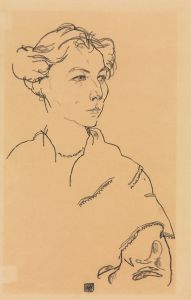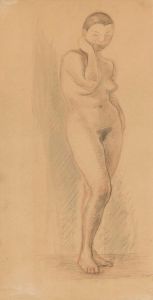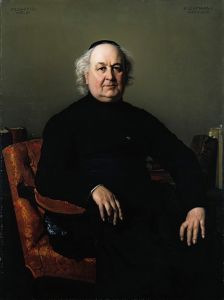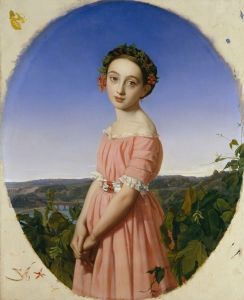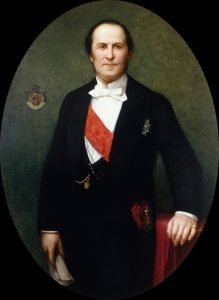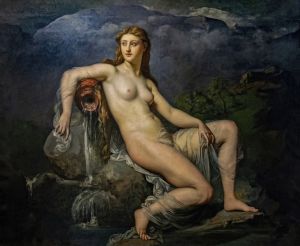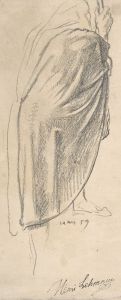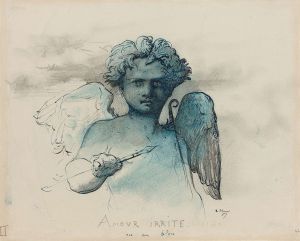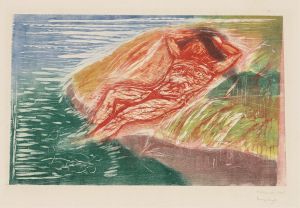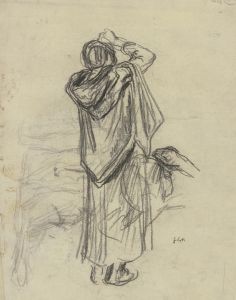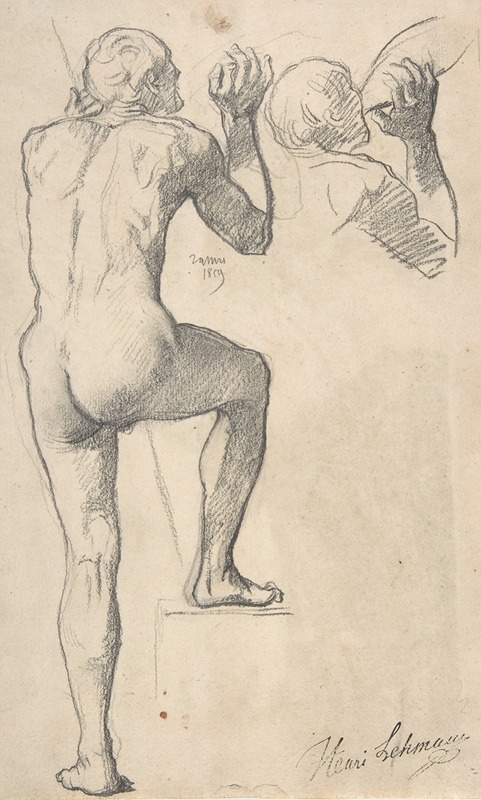
Back View of a Male Nude
A hand-painted replica of Henri Lehmann’s masterpiece Back View of a Male Nude, meticulously crafted by professional artists to capture the true essence of the original. Each piece is created with museum-quality canvas and rare mineral pigments, carefully painted by experienced artists with delicate brushstrokes and rich, layered colors to perfectly recreate the texture of the original artwork. Unlike machine-printed reproductions, this hand-painted version brings the painting to life, infused with the artist’s emotions and skill in every stroke. Whether for personal collection or home decoration, it instantly elevates the artistic atmosphere of any space.
Henri Lehmann's "Back View of a Male Nude" is a notable work of art that exemplifies the academic style of painting prominent in the 19th century. Henri Lehmann, a German-born French painter, created this piece during a period when the study of the human form was a critical component of artistic training and expression.
Henri Lehmann was born on April 14, 1814, in Kiel, Germany, and later moved to Paris, where he became a student of the renowned painter Jean-Auguste-Dominique Ingres. Lehmann's association with Ingres significantly influenced his artistic style, which is evident in his meticulous attention to detail and the classical approach to form and composition.
"Back View of a Male Nude" is an exemplary piece that showcases Lehmann's skill in rendering the human anatomy with precision and grace. The painting depicts a male figure from behind, emphasizing the musculature and contours of the body. The subject is posed in a manner that highlights the natural curvature and structure of the back, shoulders, and arms, demonstrating Lehmann's deep understanding of human anatomy and his ability to translate that knowledge onto the canvas.
The work is executed with a high degree of technical proficiency, characteristic of the academic tradition. The use of light and shadow in the painting enhances the three-dimensionality of the figure, giving it a lifelike presence. The careful gradation of tones and the smooth blending of colors contribute to the overall realism of the piece.
Lehmann's choice to depict the male nude from the back is significant, as it allows the viewer to focus on the form and structure without the distraction of facial features or expressions. This approach aligns with the academic practice of studying the human body as an object of beauty and a subject of scientific inquiry. The painting serves as both an artistic and educational tool, reflecting the values of the time in which it was created.
Throughout his career, Henri Lehmann produced a wide range of works, including portraits, historical scenes, and religious subjects. He was a respected member of the French art community and held various prestigious positions, such as a professor at the École des Beaux-Arts in Paris. His contributions to the art world were recognized with numerous awards and honors, solidifying his legacy as an influential figure in 19th-century art.
"Back View of a Male Nude" remains an important example of Lehmann's work and the academic style of painting. It continues to be appreciated for its technical excellence and its representation of the ideals of beauty and anatomical precision that were highly valued during the period. The painting is a testament to Lehmann's skill as an artist and his dedication to the study and portrayal of the human form.






